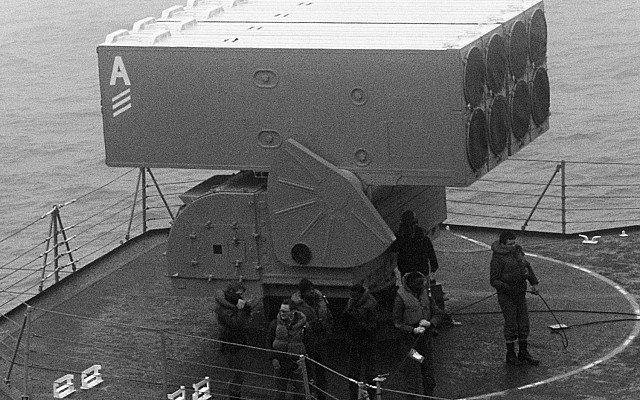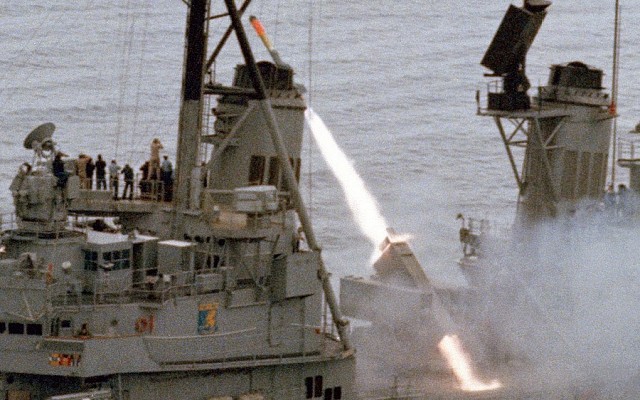RUR-5 ASROC
Overview
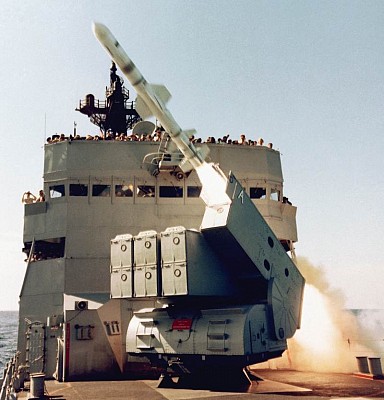
Mk 112 ASROC launcher
RGM-84 Harpoon being launched from a Mk 112 ASROC launcher.
Source: US Navy (photographer unknown) -
© public domain
United States - Honeywell
575 W44 nuclear depth charges
Matchbox (nickname for Mk 112 launcher)
RAT-C | Rocket Assisted Torpedo type C (early project name)
Type 74 (Mk 16 launcher in Japanese service)
Japan
Description
Introduction
The RUR-5 ASROC is a Cold War era naval anti-submarine warfare system of US origin. It was developed in the 1950's to provide US navy ships with an all weather stand-off system to combat the increasing threat posed by nuclear submarines. The RUR-5 ASROC remains in service in some nations. In US service the RUM-139 VL-ASROC replaced the older RUR-5.
Design
The ASROC is a long and thin missile with a solid propellant rocket motor. There are four small wings in the center and four larger wings near the nozzle. The front half of the missiles consists of the payload, which is most often a 324mm lightweight torpedo. Alternatively a nuclear depth charge is fitted. The payload is dropped at the target area using a parachute.
Guidance
The ASROC missile uses inertial guidance in order to drop off its payload at the calculated point of impact. A firing solution is calculated using input from the ship's sonar, or based on external inputs by friendly units. Based on the firing solution the launcher is trained and elevated. The missile follows a ballistic trajectory and makes only minor course corrections.
Firepower
The ASROC missile carries is most often fitted with a lightweight acoustic homing torpedo, such as the Mk 44 and Mk 46. These lightweight torpedoes are also used by helicopters and on surface vessels. An alternative warhead option is the W44 nuclear depth charge with a 10 kt yield. Maximum range of the ASROC is about 19 km.
Launchers
The main launcher associated with the ASROC is the Mk 112 octuple launcher. Depending on the placement this launcher provides a 360 degree arc of fire. The Mk 112 can be placed on top of a Mk 4 ASROC Weapons Handling System which houses 16 additional missiles below deck. This setup is used in the Spruance class. ASROC missiles can also be launched by other US launch systems. These include the twin arm Mk 26 Guided Missile Launching System and late model Mk 10 GMLS twin arm launchers.
Users
The ASROC was fitted to many types of American destroyers. Many older types of destroyers were upgraded with the ASROC. The Spruance class of destroyers featured a dedicated automatic loading system below deck. It was also widely exported to US allies. The most notable export user is Japan, with the ASROC present on many classes of Japanese ships.
Details
Warhead types
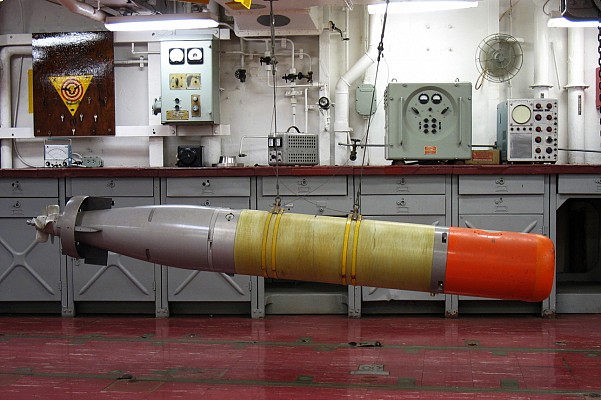
Mk 44
The conventional variant of the RUR-5 was originally fitted with the Mk 44 torpedo. Introduced in 1961.
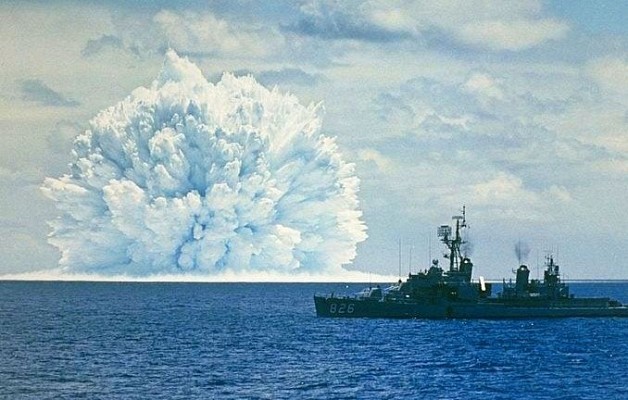
W44
The nuclear variant of the RUR-5 ASROC was fitted with the W44 nuclear depth charge. Introduced in 1961. The 10 kt warhead sinks to a predetermined depth and explodes. A total of 575 W44 were produced. By 1989 all nuclear depth charges were removed from service.
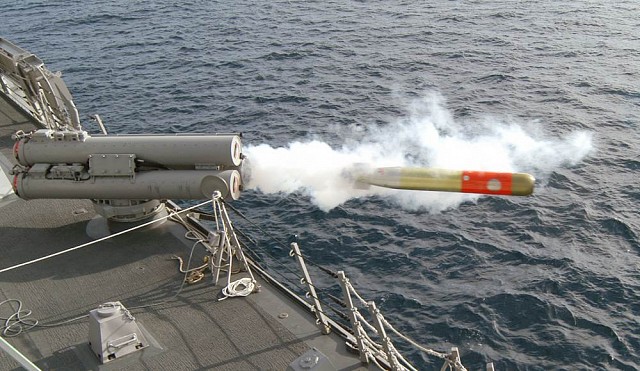
Mk 46
The majority of RUR-5 ASROC were fitted with the Mk 46 torpedo. The the mid or late 1960's early variants of the Mk 46 were used. In the 1980's the NEARTIP variants became available.

Mk 50
Reportedly a limited number of RUR-5 ASROC in US service have been fitted with the deep diving Mk 50 lightweight torpedo. The Mk 50 was also proposed for the RUM-139 VL-ASROC, but never fitted.
Details
Media
Related articles
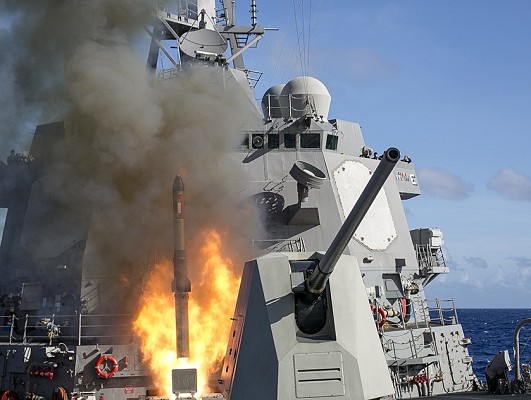
RUM-139 VL-ASROC
Next generation ASROC which is launched from a Mk 41 Vertical Launch System.
